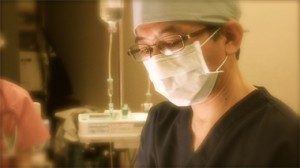
昭和62年北里大学医学部卒業。形成外科、一般外科、整形外科、麻酔科、救命救急科等広い分野の診療を手がける。平成9年北里研究所病院形成美容外科医長、茅ヶ崎徳洲会総合病院形成外科・美容外科部長を歴任。平成10年4月より銀座美容外科副院長として父子で美容外科診療に携わる。
平成20年4月より銀座・いけだクリニックの顧問医師に就任。
<資格・免許>
- 医学博士
- 日本形成外科学会認定専門医
- 日本美容外科学会専門医
- 世界美容外科学会正会員
- 日本美容医療協会正会員
- 平成20年4月銀座いけだクリニック顧問医師に就任













https://clocks-top.com/
Сливы курсов по подготовке к ЕГЭ 2026 https://courses-ege.ru
I do agree with all of the ideas you’ve introduced for your post.
They are very convincing and will definitely work.
Still, the posts are too brief for newbies.
May you please prolong them a bit from next time?
Thank you for the post.
linebet apk iphone
Astronomers first discovered Cha 1107-7626 in 2008, and since then, they have observed it with different telescopes to learn more about how the infant planet evolves, as well as to study its surroundings.
перевозки грузов по москве и области
The research team observed the planet with Webb in 2024, making a clear detection of the surrounding disk. Next, the researchers studied it using the X-shooter spectrograph on the Very Large Telescope, which can capture different wavelengths of light emitted by an object ranging from ultraviolet to near-infrared.
The observations detected a puzzling event as the planet transitioned from a steady accretion rate in April and May to a burst of growth between June and August.
https://tlk-triga.ru/tral/
трал авто
“I fully expected that this is a short-term event, because those are much more common,” Scholz said. “When the burst kept going through July and August, I was absolutely stunned.”
Follow-up observations made using the Webb telescope also showed that the chemistry of the disk had changed. Water vapor, present during the growth spurt, wasn’t in the disk before. Webb is the only telescope capable of capturing such detailed changes in the environment for such a faint object, Scholz said. Prior to this research, astronomers had only ever seen the chemistry of a disk change around a star, but not around a planet.
Comparing observations from before and during the event showed that magnetic activity seems to be the main driver behind how much gas and dust is falling on the planet — a phenomenon typically associated with stars as they grow.
But the new observations suggest that objects with much less mass than stars — the rogue world is less than 1% the mass of our sun — can have strong magnetic fields capable of driving the growth of the object, according to the study authors.
An infrared image taken with the Visible and Infrared Telescope for Astronomy shows Cha 1107-7626, a dot located in the center.
An infrared image taken with the Visible and Infrared Telescope for Astronomy shows Cha 1107-7626, a dot located in the center. ESO/Meingast et al.
A planet that acts like a star
The origin of rogue planets remains murky. It’s possible they are planets that are kicked out of orbit around stars due to the gravitational influence of other objects. Or perhaps they are the lowest-mass objects that happen to form like stars. For Cha 1107-7626, astronomers said they think it’s the latter.
“This object most likely formed in a way similar to stars — from the collapse and fragmentation of a molecular cloud,” Scholz said.
A molecular cloud is a massive, cold cloud of gas and dust that can stretch for hundreds of light-years, according to NASA.
“We’re struck by quite how much the infancy of free-floating planetary-mass objects resembles that of stars like the Sun,” Jayawardhana said in a statement. “Our new findings underscore that similarity, and imply that some objects comparable to giant planets form the way stars do, from contracting clouds of gas and dust accompanied by disks of their own, and they go through growth episodes just like newborn stars.”